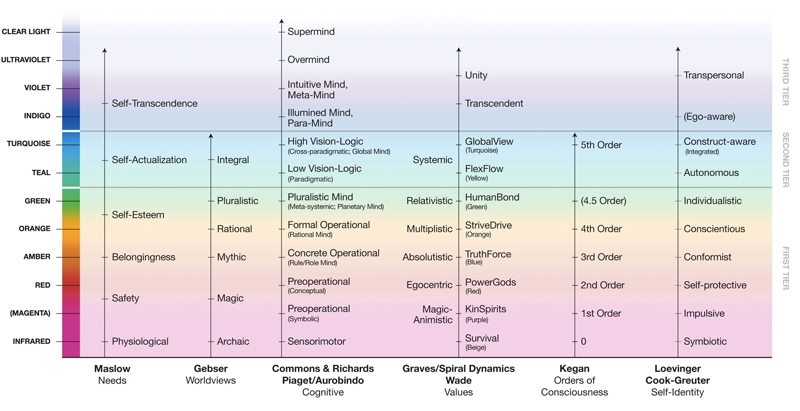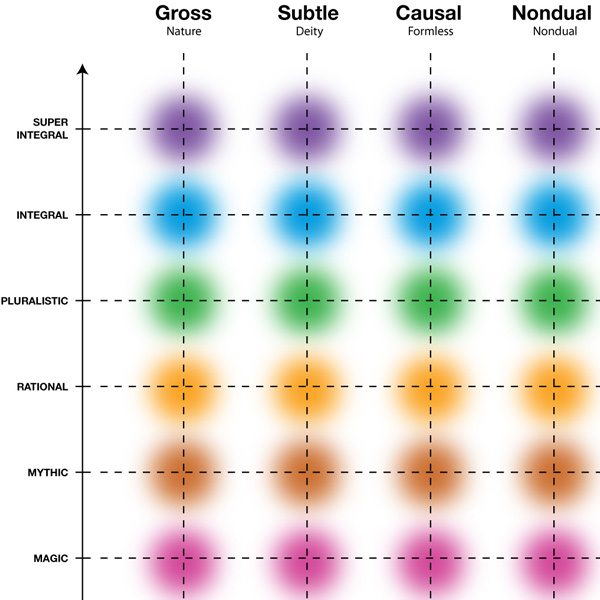Former NFL linebacker David Meggyesy talks to Ken Wilber about the extraordinary overlap that exists between sports and spirituality — and how professional athletes may be more familiar with experiences of spiritual transcendence than any of us might assume.
Sports and Spirituality
by Corey deVos
Since the dawn of civilization, sports have been an intrinsic part of human society. From the militaristic competitions of ancient China, Greece, and Egypt, to the enormous rise of spectator sports in the wake of the industrial revolution, athletics have long served society as a foundation of human triumph, camaraderie, and excellence, as well as a source of personal discipline, achievement, and improvement — not to mention a common language of stories and statistics that men have traditionally used whenever women aren’t around in order to fill the often-awkward spaces between them.
In many ways, sports represent the very best of the human spirit. And yet, some may find it odd to suggest a connection between sports and spirituality, as though these are two completely distinct facets of human life with very little in common, if anything at all. Maybe if we are talking about kung fu, tai chi, or some other martial art we can see an overlap, but what does spirituality have to do with modern western sports like football (of either variety), baseball, or basketball? After all, these games are fueled by the decidedly earthly elements of blood, sweat, and testosterone, while spirituality is often charged with the role of dealing with the more abstract and heavenly concerns of our finite human existence. But really, this establishes a sort of false dichotomy, unable to capture the full complexity and richness of either athletics or spirituality. After all, an athlete can find as much virtue, luminosity, and self-transcendence through sports as a monk can find through his or her spiritual practice. And a monk can find as much personal power, potency, and embodiment through spiritual practice as an athlete can potentially find in any type of sport.
As it turns out, there is an extraordinary overlap between sports and spirituality. The Integral model maintains that the human being is composed of many different intelligences, talents, and skills, each of which can grow through multiple stages of depth, complexity, and competency. Examples of these “multiple intelligences” (or “developmental lines”) include: cognitive ability, kinesthetic intelligence, moral development, aesthetic skill and appreciation, etc. Although each of these developmental tracks grows along its own path, each with its own unique stages of unfolding, there is enough symmetry in their overall development to suggest a very general barometer to make sense of all these different trajectories of human growth—a concept known as “altitude,” and which is demonstrated in the graphic below (see the bottom of the page for more detailed descriptions of each stage of development.)
“Athleticism” draws upon a combination of these developmental lines, in varying degrees of importance. But what is especially interesting is that, as any of these individual intelligences approach the highest stages of development currently available to us (teal, turquoise, indigo, and beyond, as indicated below) they begin to take on qualities that can only be described as “trans-rational” or, more simply, “spiritual”—which is why, for many, watching Michael Jordan play at the peak of his game can feel like listening to Mozart, looking at the Sistine Chapel, and reading Rumi at the same time.
Developmental altitude not only describes the progress of each of these multiple intelligences, but also influences the overall cultural sense of meaning that surrounds sports, for both the athlete and the spectator. For example, sports allow fans a certain amount of magenta ritual, a healthy outlet for red aggression, a source of amber allegiance to a particular team, city, state, nation, etc.

For athletes (particularly males), sports have historically had an exceptional ability to bring people from red to amber, tempering the rawness of the ego by plugging the often testosterone-driven identity into a higher-order structure of self-sacrifice, discipline, and teamwork, before opening them up to orange principles of accomplishment and excellence. These structures also determine the general values of sportsmanship with which the athlete approaches the game—whereas red is focused upon the glory of victory, amber reminds us that “there is no I in team,” orange tells us that it’s “not if you win or lose, but how you play the game,” while the modern Olympic code reflects the green sentiment that “the most important thing is not winning, but taking part.”
These different modes of sportsmanship are especially important in today’s world, which situates sports in an aggressive business market that can seriously reinforce the power-hungry ego. Without properly internalizing the ethical sensibilities of amber-and-above structures, it is all too easy for the ego to be seduced by delusions of self-importance, enabling athletes to remain red megalomaniacs running loose in an orange world of fame, status, and celebrity—which may help us understand the moral transgressions of people like Michael Vick, Kobe Bryant, Tiger Woods, Tonya Harding, and many others.

There is another definition of “spirituality,” which has more to do with the fleeting—but very real—subjective experience of spirituality that athletes frequently tap into, regardless of which developmental altitude they may be coming from. Often described with phrases like “in the zone” or “out of his head”, athletes can often slip into the same exact nondual states of consciousness that have more typically been associated with artists and mystics—states of utter self-transcendence and unobstructed creative or performative flow. These nondual “flow” states (along with gross, subtle, causal, and witness states) form the very core of esoteric and contemplative forms of spiritual practice at the heart of virtually all the world’s religious traditions—and although they have very different names, metaphysical assumptions, and cultural contexts from tradition to tradition, there is an astonishing symmetry in all of these various descriptions, enough to suggest an essential unity underlying every single spiritual experience and expression in the history of mankind.
According to many athletes, these states occur with astounding frequency—especially for those who have evolved to the highest reaches of development in any of their developmental lines, which seems to allow more stable access to these higher states. These nondual “peak-experiences” are rarely acknowledged by the sporting community, largely due to the unavailability of adequate language in sports culture to properly communicate these experiences, or to help take them off of the field/court/ice and into daily life. But whether acknowledged or not, nearly every athlete has had his or her own sense of being “in the zone” at one time or the other—the effortless collapse of player, opponent, audience, and game, until all that remains is the erotic scent of freshly-cut grass, the weight of the warm sun pressing against your skin, and the slow-motion frenzy of a Kosmos-at-play.
All in all, this exceptional dialogue goes a long way to remind us that all those aspects of our lives that seem separate or distinct from our spirituality are, in actuality, anything but. There is nothing Spirit doesn’t touch—from our highest ideals of love, respect, and sportsmanship, to the drunken bloodlust of hearing millions of people cheering you to victory—everything finds its home in the transcendent mind of God, nestled in the immanent heart of the Sacred, where the line between winning and losing becomes the very same line that separates self and other, part and whole, here and eternity.
Written by Corey deVos
Become a member today to listen to this premium podcast and support the global emergence of Integral consciousness
Membership benefits include:
Premium Content
Receive full access to weekly conversations hosted by leading thinkers

Journal Library
Receive full access to the growing Journal of Integral Theory & Practice library

Live Experiences
Stay connected by participating in Integral Life live events and discussions
Courses & Products
Get unlimited 20% discount off all products and courses from our friends and partners

Free Bonus Gifts
Download The Integral Vision eBook by Ken Wilber (worth $19 on Amazon) & The Ken Wilber Biography Series

Support of the movement
Support our mission of educating and spreading integral consciousness that is more critical than at any time in its history
About Ken Wilber
Ken Wilber is a preeminent scholar of the Integral stage of human development. He is an internationally acknowledged leader, founder of Integral Institute, and co-founder of Integral Life. Ken is the originator of arguably the first truly comprehensive or integrative world philosophy, aptly named “Integral Theory”.

